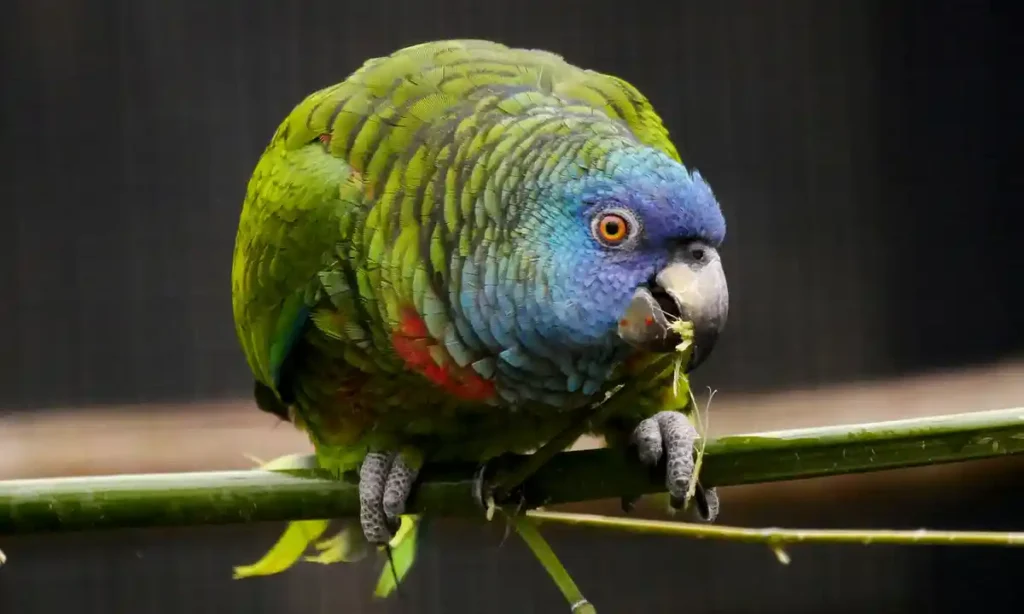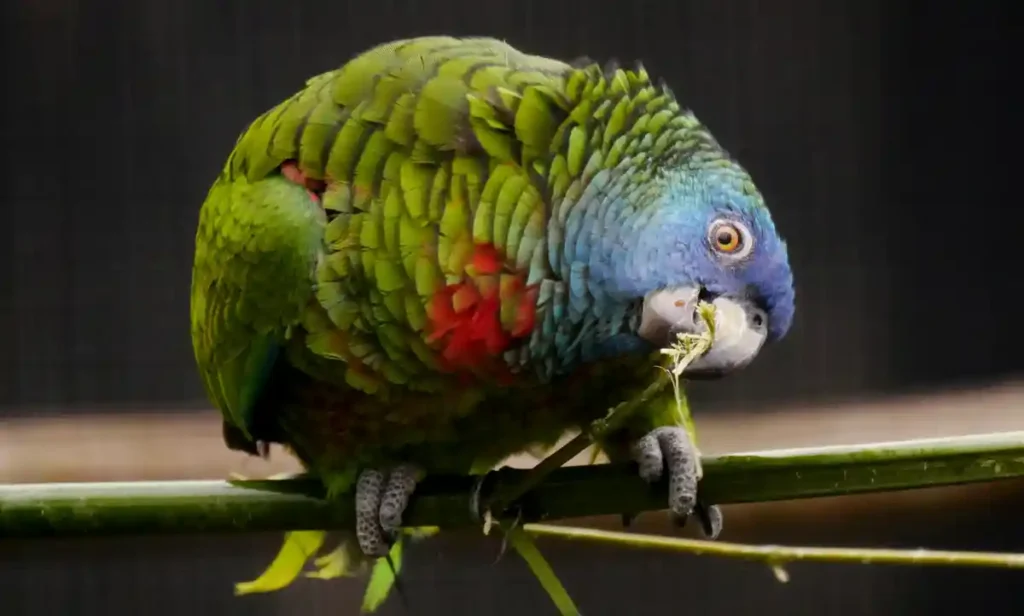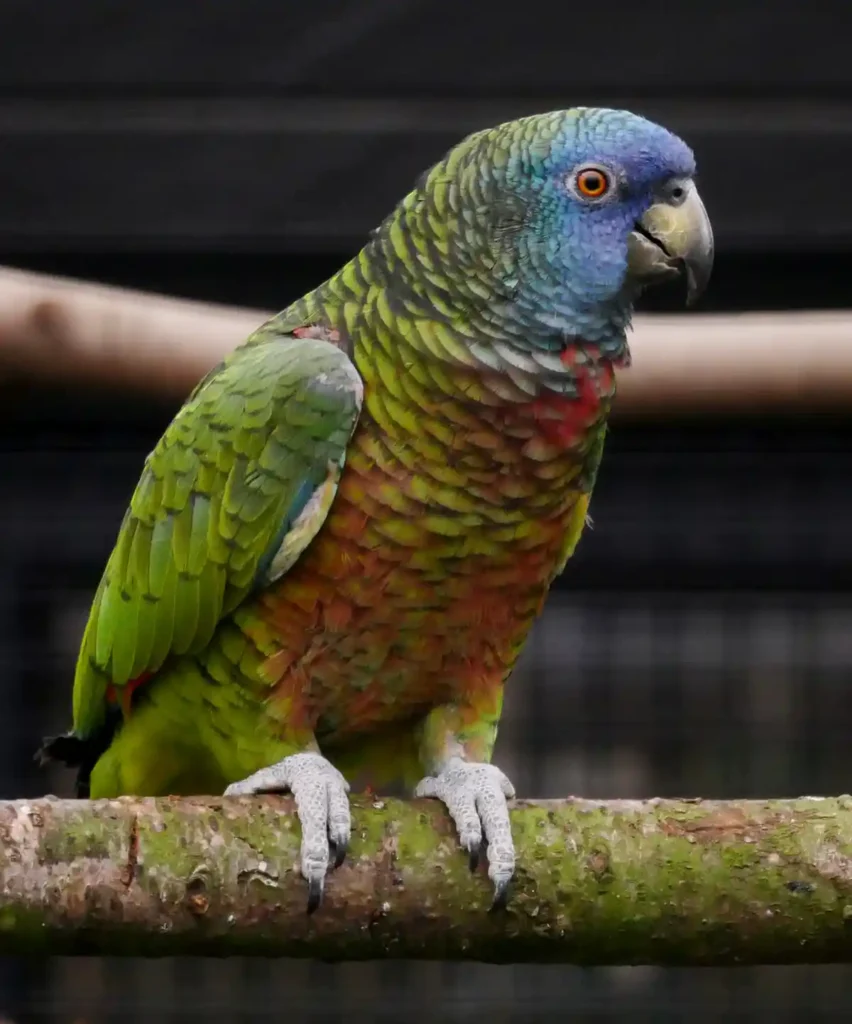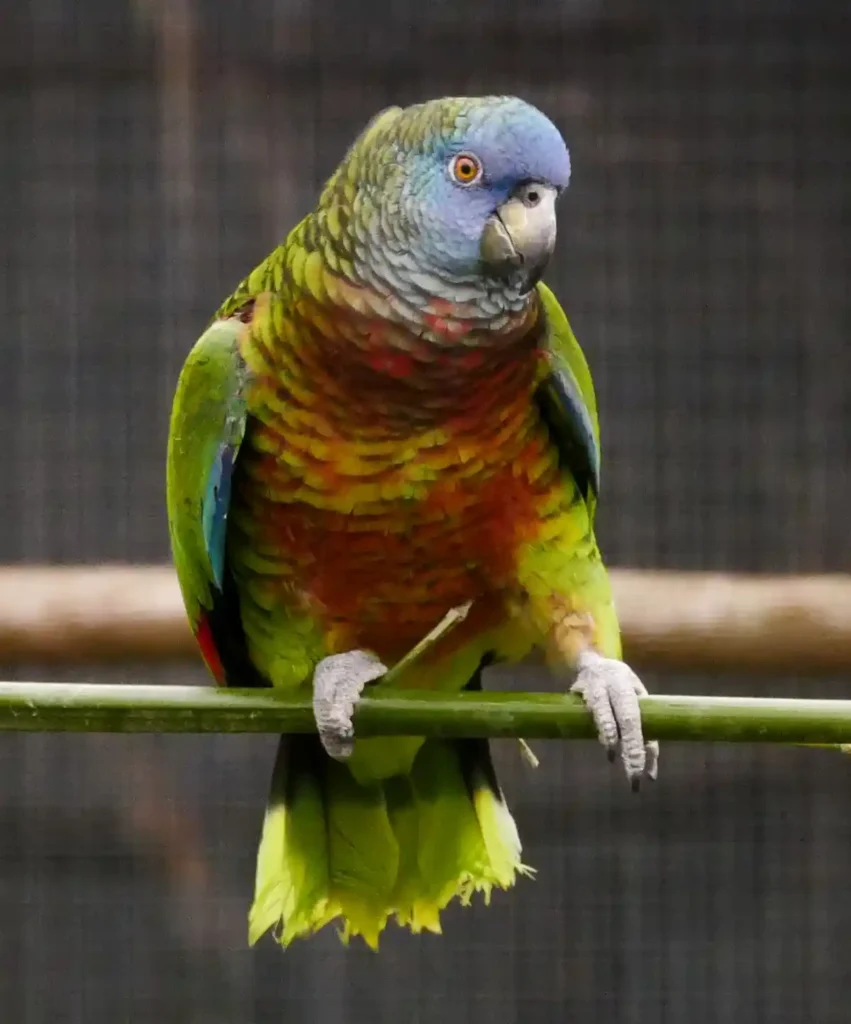
Have you ever heard of the stunning Saint Lucia parrot? Found only on the small Caribbean island of Saint Lucia, this magnificent bird is both a national symbol and an important part of the island’s ecosystem. In this article, we will dive deep into the world of the St. Lucia parrot, uncovering the unique features that make it a true national treasure. So, let’s start our journey!
About the Saint Lucia Parrot
The scientific name for the St. Lucia parrot is Amazona versicolor. It belongs to the family Psittacidae, which includes other parrots such as the macaws and cockatoos. This species is endemic to Saint Lucia, meaning it is found nowhere else in the world.
Physical Description
The St. Lucia parrot is a medium-sized parrot with bright plumage featuring an array of beautiful colors. Its head is a mix of green, blue, and red, while its body is primarily green with a scarlet breast and purple belly. The large size of this bird, along with its colorful appearance, makes it easily distinguishable from other birds on the island.
Vocalizations
The Saint Lucia amazon has a variety of unique calls, including a plaintive “ay-uh” and a loud “ka-chuck.” These vocalizations help the parrots communicate with each other and establish their presence in their territory.

The Natural Habitat of the Saint Lucia Amazon
Geographic Range
As mentioned earlier, the St. Lucia parrot is only found on the small Caribbean island of Saint Lucia. Its natural habitat consists mainly of the island’s dense rainforests, which provide ample food and shelter for these magnificent birds.
Habitat Requirements
The St. Lucia parrot requires a healthy forest ecosystem to thrive. It feeds on a diet of fruits, seeds, nuts, and berries, which it forages from trees in the rainforest. These birds prefer to nest in tree cavities, where they can safely lay their white eggs and raise their chicks away from predators.

Conservation Efforts
The St. Lucia parrot, aka Saint Lucia Amazon, was once an endangered species facing the brink of extinction in the 1970s. This delicate creature native to the lush rainforests of the small island was under severe threat due to a combination of harmful factors.
Habitat destruction, primarily due to aggressive deforestation, was one of the primary threats to this bird. The natural environment, which the parrot called home, was rapidly disappearing, leaving this species in a vulnerable state. The illegal bird trade also added to the problems. Despite being the country’s national bird, the Saint Lucia amazon was found hunting in the wild, captured, and sold, which significantly diminished their population.
At this critical juncture, a man named Paul Butler emerged as a ray of hope for the Saint Lucia parrot. Recognizing the unique value of this vibrant bird, Butler initiated a conservation campaign aimed at the protection and preservation of this native species. The campaign used the Saint Lucia amazon as a mascot, symbolizing the island’s rich biodiversity and ecological integrity. This move struck a chord with the locals and garnered substantial public support.
Subsequently, crucial conservation measures were implemented. Among these was the establishment of strict forestry laws, designed to protect watersheds and crucial wildlife habitats. These laws were enforced by the diligent Lucian Department of Forestry, which took the lead role in ensuring the survival of the Saint Lucia amazon.
Simultaneously, public awareness campaigns were launched to educate locals about the importance of their national bird and the dire consequences of its potential extinction. These campaigns also stressed the value of maintaining a healthy natural environment for all wildlife on the island.
A specific breeding program was also initiated to increase the parrot population. Through careful monitoring and intervention, this program ensured the successful breeding and chick development of the Saint Lucia amazon.
Thanks to these concerted conservation efforts, the Saint Lucia amazon population rebounded significantly. Today, the St. Lucia parrot is no longer on the brink of extinction but stands as a proud symbol of successful wildlife conservation. Its continued survival is a testament to what can be achieved when a community comes together to protect and preserve its natural treasures.
As of the most recent 2020 assessment by the International Union for Conservation of Nature (IUCN), the St. Lucia Parrot, or the Amazona versicolor, holds the status of being “Vulnerable”. While this represents an improvement from its previous endangered status, the species remains at risk. The primary threats it faces include habitat loss due to deforestation and illegal hunting. The IUCN stresses the importance of ongoing preservation strategies to ensure the continued survival of this vibrant bird.

Role of Forestry Department and Wildlife Preservation Trust
The Forestry Department is responsible for enforcing forestry laws, protecting watersheds, and implementing conservation measures to ensure the long-term survival of the St. Lucia parrot. The Wildlife Preservation Trust, on the other hand, provides financial support and resources for these conservation efforts. Together, they contribute significantly to the bird’s conservation, ensuring its continued presence on the island.
Threats to the St. Lucia Parrot
Despite the successful conservation efforts, the St. Lucia parrot still faces numerous threats that could jeopardize its survival.
One of the major threats is the illegal bird trade. The St. Lucia parrot’s bright plumage and unique calls make it a target for pet trade. Hunting these parrots is illegal, but some people still try to capture them, often causing harm or even death in the process.
Another significant threat is habitat destruction, primarily due to illegal clearing of forests for agriculture and development. Deforestation leads to habitat loss, reducing the available nesting and feeding grounds for the parrots.
Natural disasters such as hurricanes also pose a risk to the St. Lucia parrot. These events can cause significant damage to their habitat and food sources, affecting their survival.

Breeding and Chick Development
The Saint Lucia parrot usually lays two white eggs in a tree cavity, which are incubated for about 26 days. The chicks, or offspring, stay in the nest for around two months before they fledge. The parents continue to feed and care for them until they are independent. Monitoring and protection of these nests are essential to the successful breeding of the species.
The Parrot as a National Symbol
The St. Lucia parrot, also known as the Saint Lucia Amazon, is more than just a bird to the locals. It is the island’s national bird and a source of national pride. It is even featured on the island’s national coat of arms, stamps, and bumper stickers.
The parrot has been used as a mascot to promote environmental awareness in schools and among the general public. The people of Saint Lucia hold a deep affection for their national bird and have shown great support for its conservation. This popular support has been instrumental in the successful recovery of the parrot population.
It’s not the only case in an island of this region where an amazon parrot species is the national bird. The Imperial Parrot is the national bird of Dominica, and the St Vincent Parrot is the national bird of Saint Vincent and the Grenadines.

Conclusion
The Saint Lucia amazon is a true testament to successful wildlife conservation. Thanks to the efforts of the Saint Lucia Forestry Department, the Wildlife Preservation Trust, and the public’s support, the parrot population has rebounded from the brink of extinction. Today, this beautiful bird continues to thrive in its natural habitat, serving as a vibrant symbol of Saint Lucia’s rich biodiversity.
We hope this article has provided a comprehensive insight into the St. Lucia parrot’s world. Let’s continue to support conservation measures and spread awareness to ensure the survival of this unique species for future generations.
Remember, every bird, every tree, and every conservation effort contributes to the integrity and beauty of our world. Let’s do our part to protect it. After all, isn’t it awe-inspiring to think about the role we can play in a species’ survival story?
